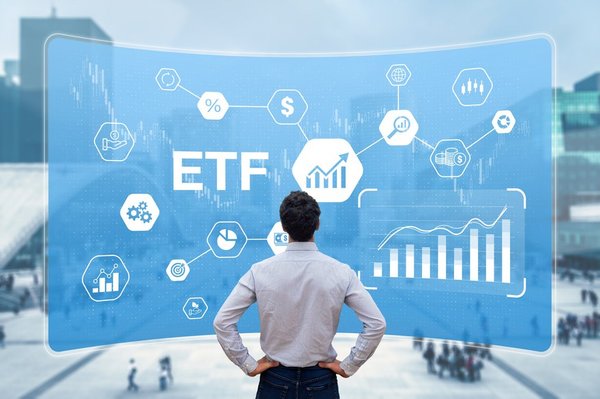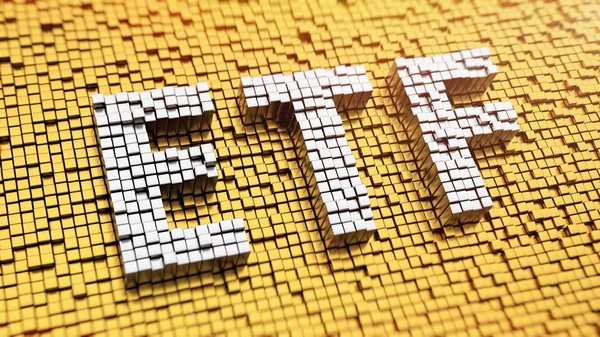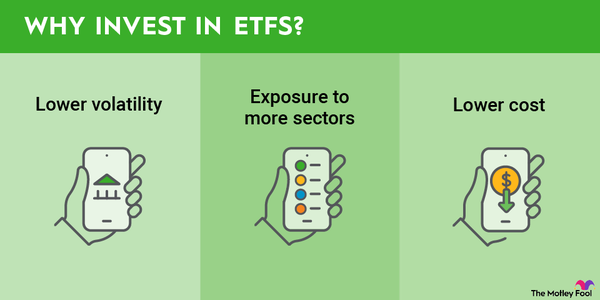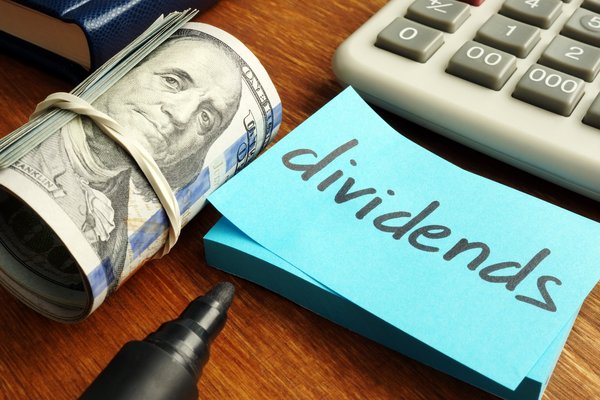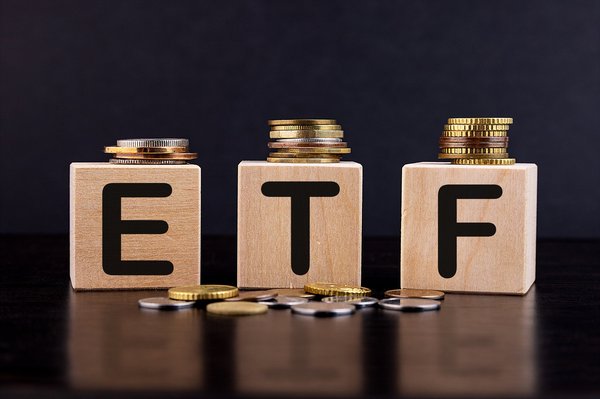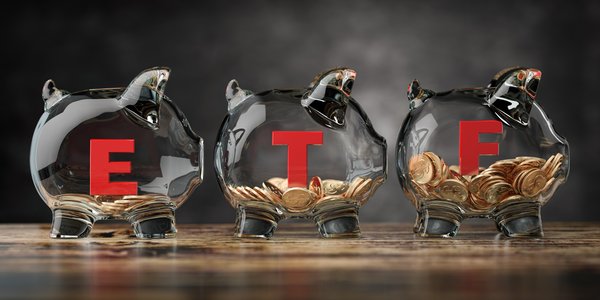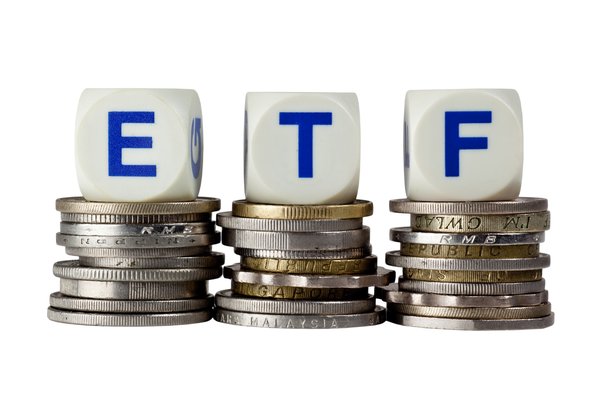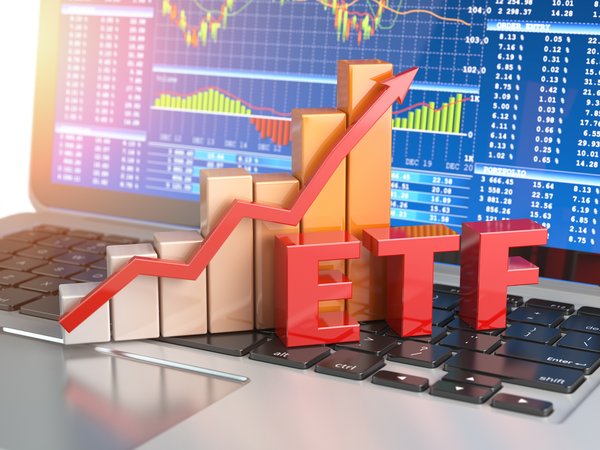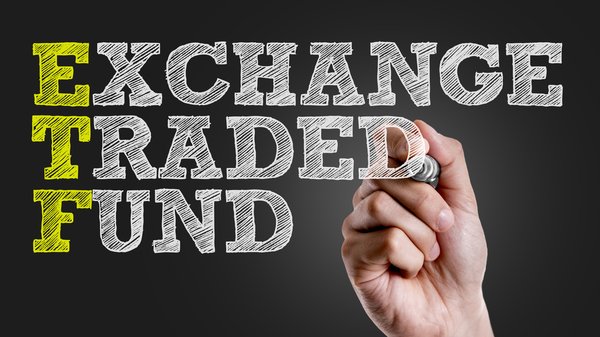iShares iBoxx $ Investment Grade Corporate Bond ETF (LQD 0.44%) is one of the hundreds of exchange-traded funds (ETFs) focused on the global bond market. Like most bond ETFs, this fund focuses on a specific segment of the bond market: U.S. investment-grade rated corporate bonds. These high-quality bonds provide investors with a low-risk fixed-income stream.
This guide will teach you everything you need to know about the iShares iBoxx $ Investment Grade Corporate Bond ETF. It will also show you how to invest in ETFs for beginners.
What is it?
What is iShares iBoxx $ Investment Grade Corporate Bond ETF?
iShares iBoxx $ Investment Grade Corporate Bond ETF is exactly as its name suggests: an ETF focused on investment-grade corporate bonds. Investment-grade bonds have a lower default risk than non-investment-grade bonds (i.e., junk bonds) and carry slightly higher credit risk than treasuries and municipal bonds.
Exchange-Traded Fund (ETF)
The BlackRock (BLK 1.33%)-managed ETF provides investors with broad exposure to a range of high-quality U.S. corporate bonds. It aims to track the investment results of an index composed of investment-grade corporate bonds denominated in U.S. dollars (Markit iBoxx USD Liquid Investment Grade Index).
The ETF makes it easy to invest in a large portfolio of investment-grade bonds through a single fund. Adding corporate bonds to a portfolio increases diversification, lowers risks, and provides a stable source of income.
How to invest
How to buy iShares iBoxx $ Investment Grade Corporate Bond ETF
Anyone can buy shares of iShares iBoxx $ Investment Grade Corporate Bond ETF. It trades on a major stock exchange, allowing you to purchase shares in your brokerage account. Here's a four-step guide to help you add the bond ETF to your portfolio.
Step 1: Open a brokerage account
You'll have to open and fund a brokerage account before buying shares of any ETF. If you need to open one, here are some of the best-rated brokers and trading platforms. Take your time researching the brokers to find the best one for you.
Step 2: Figure out your budget
Before making your first trade, you'll need to determine a budget for how much money you want to invest. You'll then want to figure out how to allocate that money. The Motley Fool's investing philosophy recommends building a diversified portfolio of 25 or more stocks you plan to hold for at least five years.
So, if you have $10,000 to invest, you'd want to invest about $400 across around 25 different holdings. However, ETFs like the iShares iBoxx $ Investment Grade Corporate Bond ETF provide instant diversification. This fund holds more than 1,000 bonds issued by dozens of high-quality companies, so with its diversity and focus on lower-risk investment-grade corporate bonds, investors could opt to allocate a larger portion of their portfolio to the ETF.
Step 3: Do your research
You need to thoroughly research any investment before committing your hard-earned money. When analyzing an ETF, you should review its strategy, holdings, expense ratio, and historical performance. You should also look at how it compares to the best ETFs to buy.
Step 4: Place an order
Once you've opened and funded a brokerage account, set your investing budget, and researched the investment, it's time to buy shares. The process is relatively straightforward. Go to your brokerage account's order page and fill out all the relevant information, including:
- The number of shares you want to buy or the amount you want to invest to purchase fractional shares.
- The stock ticker (LQD for iShares iBox $ Investment Grade Corporate Bond ETF).
- Whether you want to place a limit order or a market order. The Motley Fool recommends using a market order since it guarantees you buy shares immediately at market price.
Once you complete the order page, click to submit your trade and add the bond ETF to your portfolio.
Largest holdings
Holdings of iShares iBoxx $ Investment Grade Corporate Bond ETF
iShares iBoxx $ Investment Grade Corporate Bond ETF is one of the larger bond ETFs by assets under management (AUM). It held more than $28 billion of net assets in mid-2024, consisting of more than 2,750 investment-grade corporate bonds.
The 10 largest bond issuers held by the fund in mid-2024 were:
- Bank of America (BAC 3.52%): 2.8% of its net assets were bonds issued by the banking giant.
- JPMorgan Chase (JPM 1.66%): 2.7% of its holdings were bonds from the banking behemoth.
- Wells Fargo (WFC 1.2%): 2.1% of its net assets were bonds issued by the leading bank.
- Morgan Stanley (MS 0.63%): 2.1% of its holdings were bonds issued by the investment bank.
- Citi (C 0.61%): 1.8% of its net assets were bonds issued by the large bank.
- Goldman Sachs (GS 1.4%): 1.7% of its holdings were bonds issued by the investment bank.
- Verizon (VZ 2.03%): 1.6% of its holdings were bonds issued by the telecom giant.
- AT&T (T 3.4%): 1.5% of its holdings were bonds issued by the communications giant.
- Oracle (ORCL 0.09%): 1.5% of its holdings were bonds issued by the software company.
- Comcast (CMCSA 2.98%): 1.4% of its net assets were bonds issued by the cable company.
While the fund holds a diversified portfolio of bonds, it has meaningful exposure to the banking sector (23.6% of its net assets). That's largely because banks issue lots of debt to fund new loans. The ETF's exposure to bank debt is a potential risk investors will need to monitor. A future financial crisis could weigh on the ETF's value and the income it produces if bank issuers can't pay the interest on their debt.
Should I invest?
Should I invest in iShares iBoxx $ Investment Grade Corporate Bond ETF?
Investing can be very personal. You want to make sure your portfolio aligns with your investing goals, personal values, and risk tolerance. With that in mind, here are some reasons why you might want to invest in iShares iBoxx $ Investment Grade Corporate Bond ETF:
- You want to invest in a sector ETF focused on a broad range of investment-grade bonds.
- You're seeking a lower-risk, income-focused investment.
- You want a monthly income stream.
- You want to diversify your portfolio by adding a fixed-income investment.
- You would like a higher income yield than U.S. treasuries offer.
- You're comfortable with having meaningful credit exposure to the U.S. banking sector.
On the other hand, here are some reasons why you might decide that iShares iBoxx $ Investment Grade Corporate Bond ETF isn't right for your situation:
- You're seeking a higher return than investment-grade corporate bonds can provide.
- You'd prefer an investment with less exposure to the U.S. banking sector.
- You're seeking a lower-risk, fixed-income stream like U.S. treasuries.
- You'd prefer to hand-pick the bonds you invest in.
- You're seeking a lower-cost bond ETF.
- You want a more diversified bond ETF that also holds government, junk, and international bonds.
Dividends
Does iShares iBoxx $ Investment Grade Corporate Bond ETF pay a dividend?
iShares iBoxx $ Investment Grade Corporate Bond ETF pays a dividend. It makes monthly distributions of the interest income generated by the bonds it holds. Those payments fluctuate based on the interest rates of the bonds in its portfolio:
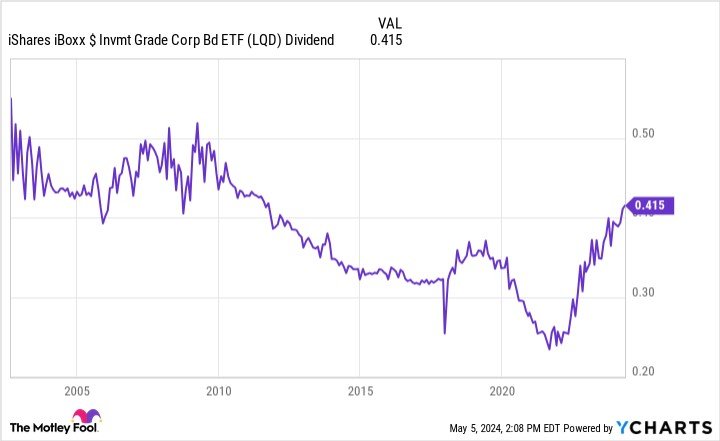
As of mid-2024, the fund delivered a 4.4% income yield over the trailing-12-month period. However, its income yield will likely be higher in the coming months because it has added more higher-yielding bonds as interest rates have risen. The average yield to maturity of its bonds was 5.6%, so the fund could make higher income distributions in the future. That could make it a solid dividend ETF for those seeking income.
Expense ratio
What is iShares iBoxx $ Investment Grade Corporate Bond ETF's expense ratio?
iShares iBoxx $ Investment Grade Corporate Bond ETF charges investors a 0.14% expense ratio. That's a relatively low ETF expense ratio overall and in line with many other top bond ETFs. However, it's higher than many of the lowest-cost bond funds.
ETF Expense Ratio
For example, the largest bond funds by AUM, IShares Core U.S. Aggregate Bond ETF (AGG 0.32%) and Vanguard Total Bond Market ETF (NYSEMKT:BND), each have a 0.03% expense ratio. To put that into a different context, a $10,000 investment in those top bond funds would cost about $3 annually. On the other hand, a $10,000 investment in iShares iBoxx $ Investment Grade Corporate Bond ETF would cost about $14 per year. The higher cost means investors would receive less of the income this bond fund generates each year, which might make it a less appealing long-term ETF compared to lower-cost funds.
Historical performance
Historical performance of iShares iBoxx $ Investment Grade Corporate Bond ETF
Interest rates can have a significant impact on bonds. Lower rates affect bond yields while rising rates can weigh on their prices. These two headwinds have caused investment-grade corporate bonds to deliver relatively meager returns over the past decade:
| Fund | 1-Year | 3-Year | 5-Year | 10-Year |
|---|---|---|---|---|
| iShares iBoxx $ Investment Grade Corporate Bond ETF | 3.84% | -2.53% | 1.42% | 2.61% |
|
Benchmark (Markit iBoxx USD Liquid Investment Grade Index) |
4.00% | -2.41% | 1.54% | 2.77% |
While investment-grade corporate bonds have been a rather unappealing investment over the years, this ETF has only slightly underperformed its benchmark due to its expense ratio.
On a more positive note, higher interest rates in recent years are starting to have a positive impact on bond returns. If interest rates remain relatively high, bonds could deliver higher returns in the future.
Related investing topics
The bottom line on iShares iBoxx $ Investment Grade Corporate Bond ETF
iShares IBoxx $ Investment Grade Corporate Bond ETF enables investors to gain fairly broad exposure to high-quality bonds. The fund allows investors to diversify their portfolios by adding a fixed-income element, which helps reduce risk. Investment-grade bonds also supply relatively stable income.
However, the tradeoff for this lower-risk profile involves lower returns, especially during periods of low interest rates. Despite that, investment-grade bonds are an excellent addition to any investor's portfolio, especially as they approach retirement. This ETF makes it easy to invest in high-quality bonds.
FAQ
Investing in iShares iBoxx $ Investment Grade Corporate Bond ETF FAQ
What is iShares iBoxx $ Investment Grade Corporate Bond ETF?
iShares iBoxx $ Investment Grade Corporate Bond ETF is managed by BlackRock and holds investment-grade corporate bonds. These high-quality bonds are less risky than non-investment-grade bonds (junk bonds). While they have lower yields, they tend to generate very stable interest income that the ETF distributes to holders each month. The fund can help investors diversify their portfolios, reduce risk, and earn income.
How to invest in investment-grade bonds?
There are many ways to invest in investment-grade bonds. You can directly invest in investment-grade bonds, invest in a mutual fund focused on these bonds, or buy an investment-grade bond ETF. Buying a bond ETF focused on investment-grade bonds is the easiest way to invest in corporate bonds since you don't have to worry about selecting the right bonds or laddering your bond maturities. Investment-grade bond ETFs provide instant exposure to a large portfolio of these high-quality bonds.
How do I invest in corporate bonds?
You have a few ways to invest in corporate bonds. You can buy them directly at your brokerage account, invest in a bond-focused mutual fund, or buy a bond ETF. You can buy a bond ETF in your brokerage account, making it easy to invest in corporate bonds. They also provide diversified exposure to corporate bonds, eliminating the need to select the right ones or ladder your bond maturities.
What is the largest investment-grade corporate bond ETF?
The largest investment-grade corporate bond ETF is the Vanguard Intermediate-Term Corporate Bond ETF (NYSEMKT: VCIT). It had about $45 billion of assets under management in mid-2024. The ETF focuses on corporate bonds with an average maturity of five to 10 years.









